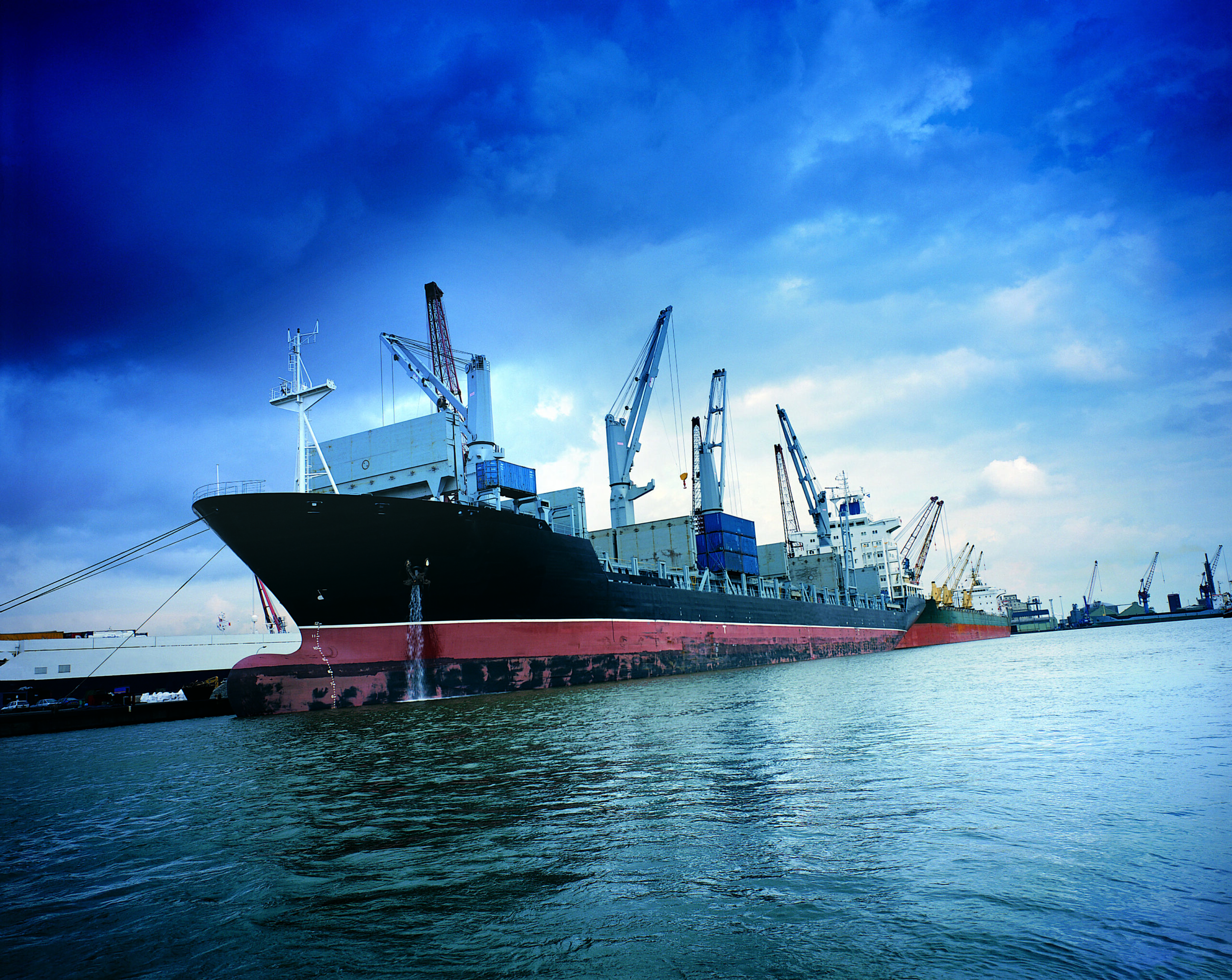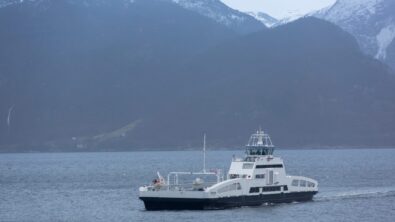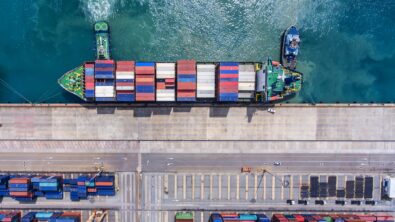Marine STS – Integrating Simulation into Sustainable Ship Design – Transcript

In the second episode of the Marine Industry Podcast Series on STS in the marine industry, Jan and Dejan explore potential options for future ship engines and propulsion systems, as well as how beneficial simulation would be in the design of sustainable ships.
Listen to the full episode or continue reading below for the transcript.
Blake Snodgrass: Hello and welcome to our second Marine Industry Podcast and our Marine Industry STS series. I’m your moderator, Blake Snodgrass, a writer for the Thought Leadership team at Siemens, and I’m again joined by our special guests and industry experts, Jan van Os, Vice President of the Marine Industry at Siemens Digital Industries Software, and Dejan Radosavljevic, Director of the Marine Industries at the simulation and test segment of Siemens Digital Industries Software.
Blake Snodgrass: So welcome to you both, and it’s great to have you here again. When we left off in our previous episode, we were talking about the future of ship design. So let’s stay in that same vein and let me ask a question about future engines for ships. Or what future fuel delivery systems coming to the fore in the future?
Jan van Os: Yeah, let’s say if you look at fuels, and that’s an interesting question, because if you have to go to net zero, that means that you need to have some kind of fuel which is not causing any CO2 or any other greenhouse gases. So then you are thinking about hydrogen, but okay, hydrogen has to be made in sufficient amounts. You can make it with green energy, coming from windmills or solar panels, but there are also other fuels which are maybe a little bit cheaper at the moment and easier to get than hydrogen. Hydrogen is not produced in big amounts yet and the shipbuilding, or the ship operation, it’s requiring quite some tons of fuel every year. But if you look at the fuels then I think in the end hydrogen is a very good one but also methanol can be used, and then especially green methanol ammonia is being used.
Jan van Os: You see some owners looking at ammonia, but it’s also dangerous and it has to be produced also in a green way. For the smaller ships, let’s say more the inland ships and also the coastal vessels, electrical, but to carry enough capacity onboard is limited. So that will only be usable for ships which are sailing on a regular route and not too far away from the coast and where they can reload every day. LNG as a transition fuel, and the other thing what is happening at the moment is to go to cleaner fuels, to get rid of the heavy fuel, go more to show for low-sulfur fuels, go more to gas oil. So you have several steps but in the end you are looking to the ultimate goal about having net zero, few net zero fuels. And that’s quite challenging to get that onboard the vessel.
Jan van Os: Let’s say gasoline or heavy oil has a high density of energy, and if you go to LNG you already need three to four times the volume to get the amount of fuel with you to have an- arrange which you need for your operations. So there are some, some fuels which are being looked at the moment. If you look at new ships being built and methanol at the moment, is the most popular one. Especially container companies are ordering methanol vessels and LNG. But we will see what’s coming out in the coming years, but it means that there will be a high development in the fuels but also in, let’s say, in the engines which can burn those fuels and also with the systems surrounding those engines onboard of vessels. And one thing for sure it will not be as easy as having just a diesel engine onboard anymore. It will be more complex.
Jan van Os: So there is going to a lot to be happen in the coming years in fuels and there is not one fuel set at the moment in which direction it’s going completely. So they are looking at the options still and choosing what will be the best. So I think from my perspective, hydrogen will be the best, but it’s also the most complicated and the most expensive at the moment.
Blake Snodgrass: Go ahead Dejan.
Dejan Radosavljevic: Yes. I just wanted to say it’s interesting that clearly the challenge has increased since this change in IMO targets to the point that recently there were announcements of two classifications societies doing feasibility studies of nuclear option. And of course nuclear is like zero carbon emission. Of course there are other implications in terms of safety, but nothing is off the table at the moment with such a big massive challenge to meet now these new targets, everything is being looked at. Yeah.
Jan van Os: And I agree with you. You’re completely right with nuclear, which is an option for certain ship dives where there is enough space and where we can, let’s say, safeguard the fact that you have a nuclear reactor onboard. But that’s also the most difficult one because of liability and international law. But it’s certainly an option, and if you see what companies are investing in having, let’s say more commercial operated nuclear power plants, this could be certainly an option for the bigger vessels. So what Dejan is saying, nothing is off the table at the moment, and we will see the coming years in which direction it is going. But it’s challenging, but also interesting, what’s going to happen in the next years.
Blake Snodgrass: Yeah. As you said, there are a lot of options. It will be interesting to see how that plays out. You both touched on simulation earlier. Let’s talk about how the marine industry is using integrated simulation to meet some of their IMO goals.
Jan van Os: Yeah, I think this is a question for you, Dejan, as they the expert in simulation.
Dejan Radosavljevic: Yes. Well, in addition to these changes about the targets for reaching net zero, which impact the design of the ships currently in the design process and the future design which is addressed through the EEDI Index or Energy Efficiency Design Index. There is also the question of what happens with the ships currently in operation, because earlier this year there was another regulation put in place from the 1st of January which impacts another index which is called EEXI or Energy Efficiency for Existing ships, and that also sets now targets for ships in currently in operation, in terms of how much emissions and CO2 they are allowed to emit. And of course that is another massive headache for ship owners because they have to assess whether their ships currently in the fleet, some of which can be fairly young, could be only five years, whether they are capable of meeting these new regulatory targets and then if not, what to do. Whether they should just scrap them or whether it’s worth investing in modifying them to meet those requirements.
Dejan Radosavljevic: And this is really where there is no alternative in my opinion, to having integrated simulation environment because you can take the existing shape as it is, put it in a simulation environment and then run various scenarios from changing the propulsion system, from changing the fuel, from doing retrofits, from adding energy saving devices, and then go through tens, hundreds, or even thousands of different scenarios and try to figure out is there a scenario which is cost effective which makes sense commercially, to invest and make sure that the ship has its future, or whether it’s just too expensive, in which case the decision may be to decide and scrap ship. But in my opinion, there is absolutely no alternative for that aspect of the current market to actually using digitalization and simulation to get to the answer.
Blake Snodgrass: So can you design out failures in the integrated simulation process and addressing any kind of failures when designing ships?
Dejan Radosavljevic: So the failures can come in two different ways. One is when you have, when you encounter failures during operation and then definitely you can look at the root cause of failure and find out the way to mitigate that, or even at the early design phase if you are careful with setting the use cases of scenarios that you are simulating your ship planning the operational envelope, it’s going to operate in. Then again, simulation can pinpoint any potential dangerous and any potential failures. In terms of vessels, the most common one come with the propulsion system, whether it’s down to vibration, cavitation, erosion, pressure pulses and so on. And all these can be predicted now accurately, early in the design stage and designed out when it comes to existing ships.
Dejan Radosavljevic: Looking at energy saving devices, there are many common energy saving devices that could be added to vessel to increase its efficiency, such as a pre swirl stators or fins or propeller boss cap fins. But the problem is once you add them to an existing vessel, you change the flow, and that may result in some kind of failure. So add in, again, vibration or cavitation or cavitation erosion and all these things can be predicted and simulated before they’re implemented. And that’s part of this analysis, as I said for EEXI, what options are ship owner has at its disposal in order to meet the new regulatory requirements.
Blake Snodgrass: Okay Dejan, I think you already covered some of this on retrofitting existing ships, but if we could maybe dive a little deeper into it and looking at cost analysis and new regulations, when you’re looking at ships that are 12 to 15 years old, and being scrapped due to fuel and other traits. What is some of the process involved in retrofitting for new regulations?
Dejan Radosavljevic: Well, I mean, if you look at the range of options that are available at disposal, so when wind assisted propulsion for example, you can put wind sails or flat their rotors or kites. So the question is, all those things cost money. So what the what will be the outcome of fitting those in terms of operational cost, and also in terms of investment cost? So the only way to do a proper cost analysis is to do a full ship as a system simulation with the changes that are potentially proposed, look at the cost of that, look at the cost of at the operational cost, the resulting operational cost over the planned ship life, whether it’s another five years or 10 years, 15 years, and then making this decision.
Dejan Radosavljevic: And as I mentioned, I don’t see there is an alternative method that will allow ship owners better way of being able to make a decision. What makes sense? What doesn’t make sense? Where to invest and which investment options to stay away from, because there are so many currently options. Air lubrication is another one. And you know, it’s like ship owners are faced with this huge range of things which are being offered as a solution and not knowing which one actually makes sense. And with simulation they can get, the answer they need to make a final decision.
Blake Snodgrass: Thank you for that answer, Dejan, and I want to thank both Jan and Dejan for their input today in this episode. And we look forward to more on this same topic as we continue the marine STS podcast series. So we hope you can join us again. Goodbye for now. Thank you.
Siemens Digital Industries Software helps organizations of all sizes digitally transform using software, hardware and services from the Siemens Xcelerator business platform. Siemens’ software and the comprehensive digital twin enable companies to optimize their design, engineering and manufacturing processes to turn today’s ideas into the sustainable products of the future. From chips to entire systems, from product to process, across all industries. Siemens Digital Industries Software – Accelerating transformation.


